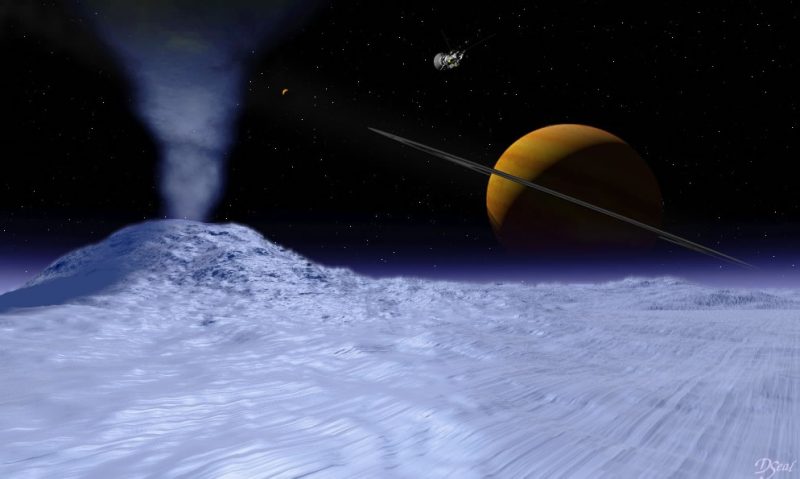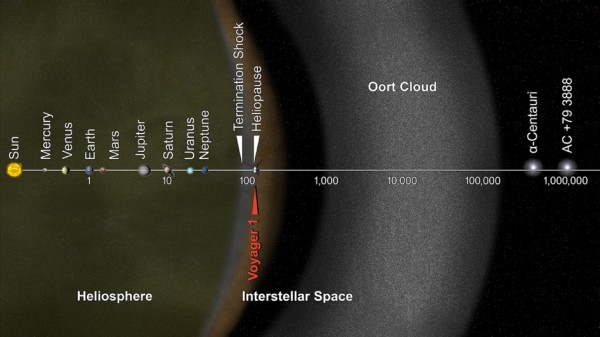
Remember those Styrofoam models of the solar system we made in elementary school? The solar system is even cooler than that! Here are 10 things you might not know.
1. The hottest planet isn’t closest to the sun. Many people know that Mercury is the closest planet to the sun, well less than half of the Earth’s distance. It’s no mystery, therefore, why people would assume that Mercury is the hottest planet. We know that Venus, the second planet away from the sun, is on the average 30 million miles (48 million km) farther from the sun than Mercury. The natural assumption is that, being farther away, Venus must be cooler. But assumptions can be dangerous. For practical consideration, Mercury has no atmosphere, no warming blanket to help it maintain the sun’s heat. Venus, on the other hand, is shrouded by an unexpectedly thick atmosphere, about 100 times thicker than Earth’s atmosphere. This in itself would normally serve to prevent some of the sun’s energy from escaping back into space and thus raise the overall temperature of the planet. But in addition to the atmosphere’s thickness, it is composed almost entirely of carbon dioxide, a potent greenhouse gas. The carbon dioxide freely lets solar energy in, but is much less transparent to the longer wavelength radiation emitted by the heated surface. Thus the temperature rises to a level far above what would be expected, making it the hottest planet. In fact the average temperature on Venus is about 875 degrees Fahrenheit (468 degrees Celsius), hot enough to melt tin and lead. The maximum temperature on Mercury, the planet closer to the sun, is about 800 degrees F (427 degrees C). In addition, the lack of atmosphere causes Mercury’s surface temperature to vary by hundreds of degrees, whereas the thick mantle of carbon dioxide keeps the surface temperature of Venus steady, hardly varying at all, anywhere on the planet or any time of day or night!

2. Pluto is smaller in diameter than the U.S. The greatest distance across the contiguous United States – from Northern California to Maine – is nearly 2,900 miles (about 4,700 km). Thanks to the New Horizons spacecraft in 2015, we now know that Pluto is 1,473 miles (2,371 km) across, less than half the width of the U.S. Certainly in size it is much smaller than any major planet, perhaps making it a bit easier to understand why, in 2006, the International Astronomical Union changed Pluto’s status from major planet to dwarf planet.
3. George Lucas doesn’t know much about asteroid fields. In many science fiction movies, spacecraft are often endangered by pesky asteroid fields. In actuality, the only asteroid belt we are aware of exists between Mars and Jupiter, and although there are tens of thousands of asteroids in it (perhaps more), they are quite widely spaced and the likelihood of colliding with one is small. In fact, spacecraft must be deliberately and carefully guided to asteroids to have a chance of even photographing one. Given the presumed manner of asteroid creation, it is highly unlikely that spacefarers will ever encounter asteroid swarms or fields in deep space.
4. You can make volcanos using water as magma. Mention volcanoes and everyone immediately thinks of Mount St. Helens, Mount Vesuvius, or maybe the lava caldera of Mauna Loa in Hawaii. Volcanos require molten rock called lava (or magma when still underground), right? Not really. A volcano forms when an underground reservoir of a hot, fluid mineral or gas erupts onto the surface of a planet or other non-stellar astronomical body. The exact composition of the mineral can vary greatly. On Earth, most volcanoes sport lava (or magma) that has silicon, iron, magnesium, sodium, and a host of complicated minerals. The volcanoes of Jupiter’s moon Io appear to be composed mostly of sulfur and sulfur dioxide. But it can be simpler than that. On Saturn’s moon Enceladus, Neptune’s moon Triton, and others, the driving force is ice, good old frozen H20! Water expands when it freezes and enormous pressures can build up, just as in a “normal” volcano on Earth. When the ice erupts, a cryovolcano is formed. So volcanoes can operate on water as well as molten rock. By the way, we have relatively small scale eruptions of water on Earth called geysers. They are associated with superheated water that has come into contact with a hot reservoir of magma.

5. The edge of the solar system is 1,000 times farther away than Pluto. You might still think of the solar system as extending out to the orbit of the much-loved dwarf planet Pluto. Today we don’t even consider Pluto a full-fledged planet, but the impression remains. Still, we have discovered numerous objects orbiting the sun that are considerably farther than Pluto. These are Trans-Neptunian Objects (TNOs) or Kuiper Belt Objects (KBOs). The Kuiper Belt, the first of the sun’s two reservoirs of cometary material, is thought to extend to 50 or 60 astronomical units (AU, or the average distance of the Earth from the sun). An even farther part of the solar system, the huge but tenuous Oort comet cloud, may extend to 50,000 AU from the sun, or about half a light-year – more than 1,000 times farther than Pluto.
6. Almost everything on Earth is a rare element. The elemental composition of planet Earth is mostly iron, oxygen, silicon, magnesium, sulfur, nickel, calcium, sodium, and aluminum. While such elements have been detected in locations throughout the universe, they are merely trace elements, vastly overshadowed by the much greater abundances of hydrogen and helium. Thus Earth, for the most part, is composed of rare elements. This does not signify any special place for Earth, however. The cloud from which the Earth formed had a much higher abundance of hydrogen and helium, but being light gases, they were driven away into space by the sun’s heat as the Earth formed.
7. There are Mars rocks on Earth (and we didn’t bring them here). Chemical analysis of meteorites found in Antarctica, the Sahara Desert, and elsewhere have been shown by various means to have originated on Mars. For example, some contain pockets of gas that is chemically identical to the Martian atmosphere. These meteorites may have been blasted away from Mars due to a larger meteoroid or asteroid impact on Mars, or by a huge volcanic eruption, and later collided with Earth.
8. Jupiter has the biggest ocean of any planet, albeit made of metallic hydrogen. Orbiting in cold space five times farther from the sun than Earth, Jupiter retained much higher levels of hydrogen and helium when it formed than did our planet. In fact, Jupiter is mostly hydrogen and helium. Given the planet’s mass and chemical composition, physics demands that way down under the cold cloud tops, pressures rise to the point that the hydrogen must turn to liquid. In fact there should be a deep planetary ocean of liquid hydrogen. Computer models show that not only is this the largest ocean known in the solar system, but that it is about 25,000 miles (40,000 km) deep – roughly as deep as the Earth is around!
9. Even really small bodies can have moons. It was once thought that only objects as large as planets could have natural satellites or moons. In fact the existence of moons, or the capability of a planet to gravitationally control a moon in orbit, was sometimes used as part of the definition of what a planet truly is. It just didn’t seem reasonable that smaller celestial bodies had enough gravity to hold a moon. After all, Mercury and Venus have none at all, and Mars has only tiny moons. But in 1993, the Galileo probe passed the 20-mile wide asteroid Ida and discovered its one-mile wide moon, Dactyl. Since then moons have been discovered orbiting many other minor planets in our solar system.
10. We live inside the sun. Normally we think of the sun as being that big, hot ball of light 93 million miles (150 million km) away. But actually, the sun’s outer atmosphere extends far beyond its visible surface. Our planet orbits within this tenuous atmosphere, and we see evidence of this when gusts of the solar wind generate the Northern and Southern Lights. In that sense, we definitely live inside the sun. But the solar atmosphere doesn’t end at Earth. Auroras have been observed on Jupiter, Saturn, Uranus, and even distant Neptune. In fact, the outer solar atmosphere, called the heliosphere, is thought to extend at least 100 A.U. That’s nearly 10 billion miles (16 billion km). In fact the atmosphere is likely teardrop shaped due to the sun’s motion in space, with the “tail” extending tens to hundreds of billions of miles downwind.

Bottom line: The solar system is cool. Here are 10 things you might not know.











